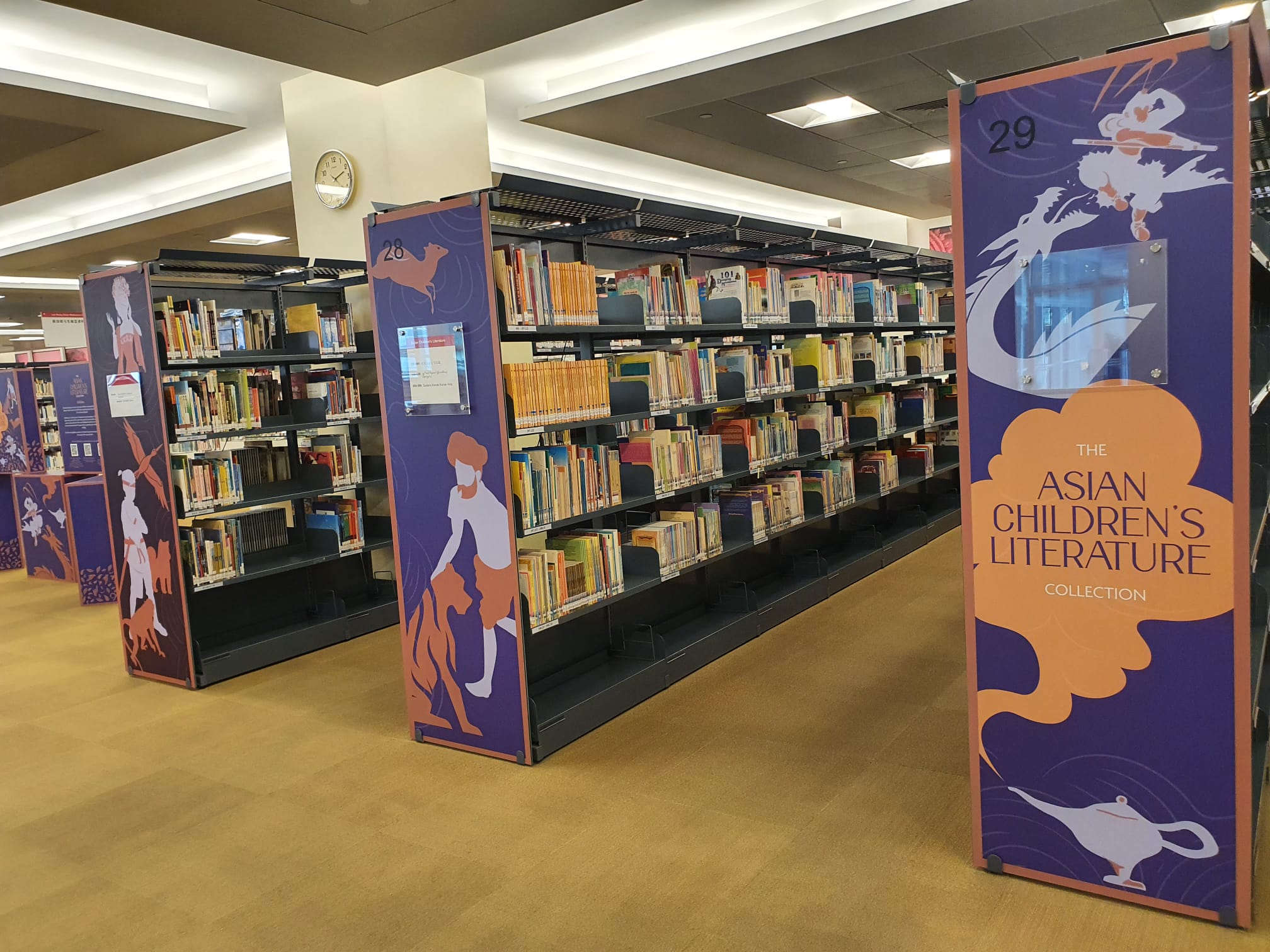NLB's Historical Asian Children's Literature Collection Recognised By UNESCO As Documentary Heritage Of Influence
About 5,000, mostly rare and first edition, books in NLB’s collection inscribed in the
UNESCO Memory of the World Committee for Asia and the Pacific’s (MOWCAP) Regional Register
26 November 2022
The National Library Board’s (NLB) Historical Asian Children’s Literature Collection (HACL) was recognised today by the UNESCO Memory of the World Committee for Asia Pacific (MOWCAP) as an indelible part of the region’s culture and heritage.
The HACL, which comprises about 5,000 books produced from 1890-1990, has been officially added to the UNESCO MOWCAP Regional Register. The collection features mainly fictional titles, including folk-tales, fairy tales, and historical fiction set in Asia. It also includes a selection of biographical stories of historical figures in Asia, and books on travel, socio-cultural issues, and customs in Asia. The collection comprises bilingual works, and titles in English, Chinese, Malay, and Tamil, as well as other Asian languages.
The Asian Children’s Literature Collection (ACL) at the Lee Kong Chian Reference Library comprises a total of about 19,000 titles, including the 5,000 in the Historical Asian Children’s Literature Collection (HACL) [Photo credit: The National Library Board]
A unique collection of works originating from Asia, the HACL places a special emphasis on collecting and preserving literature from Southeast Asia. Many of these titles are one of a kind, or no longer available or in print elsewhere. In the late 20th century, the HACL was the only known research collection of children’s books in English in the region. Selected highlights of the collection are in the Annex.
The recognition of the HACL’s importance to the documentary heritage of the Asia Pacific region affirms NLB’s commitment to preserve heritage material and make them accessible for future generations. NLB is also exploring the digitalisation of the HACL texts for patrons, including scholars and researchers, to discover and learn from.
NLB’s Chief Executive Officer, Mr Ng Cher Pong, said: “The works in our Historical Asian Children’s Literature Collection provide us valuable and important insights into the cultural heritage of Asia, and in particular Southeast Asia, by shedding light on the cultural practices, beliefs, identity, and values of generations past. As Singapore’s Storyteller, a key role under NLB’s LAB25, we seek to deepen the understanding and appreciation of Singapore’s heritage through preserving and increasing accessibility to such works. We are grateful for UNESCO’s nod of affirmation with the inclusion of the HACL in its MOWCAP Regional Register.”
Patrons can enjoy the HACL titles at Levels 9 and 11 of the Lee Kong Chian Reference Library, as part of NLB’s Asian Children’s Literature Collection, which was developed from the 1960s and currently comprises about 19,000 books in total.
The HACL is Singapore’s and NLB’s second addition to the UNESCO MOWCAP Regional Register. In 2014, the Asian Film Archives (AFA), an NLB subsidiary, was similarly recognised for its efforts to preserve significant documentary heritage through its Cathay-Keris Malay Classics Collection of 91 historically and culturally important Malay language films from the 1950s to 1970s.
Established in 1998, MOWCAP is the regional forum for UNESCO’s Memory of the World Programme (MOWP), which aims to facilitate the preservation of, enable public access to, and increase public awareness of the world’s documentary heritage. Documentary heritage, recognised by MOWCAP to be of international, regional and national significance, are included in the MOWCAP register every two years.
– END –
About National Library Board
The National Library Board (NLB) nurtures Readers for Life, Learning Communities and a Knowledgeable Nation by promoting reading, learning and history through its network of 28 libraries, the National Library and the National Archives of Singapore. NLB also forges strategic partnerships that encourage awareness, appreciation and greater discovery of Singapore's history through its rich collections in Singapore and the region.
NLB achieves excellence through innovation, focusing on citizen engagement and co-creation, resource and digital innovation. This creates learning opportunities, greater access to library resources, services, and archival collections, as well as a continual development of innovative library spaces. Established on 1 September 1995 as a statutory board, NLB is under the Ministry of Communications and Information (MCI).
For more information, please visit the NLB website, and NLB's Facebook, Instagram, LinkedIn and YouTube channels.
For media enquiries, please contact:
Quah Jia Ling
Weber Shandwick
Tel: +65 9699 0830
Email: JQuah@webershandwick.com
Hoe I Yune
Weber Shandwick
Tel: +65 9324 2061
Email: IHoe@webershandwick.com
ANNEX: Highlights on the National Library Board’s (NLB) Historical Asian Children’s Literature Collection (HACL)
|
Hang Tuah (Untuk Anak-Anak) |
A graphic novel version of one of many stories on the legendary hero, Hang Tuah. Hang Tuah was a symbol of heroism in serving the Sultan during the Melaka Sultanate. He embodied the valiant virtues of service and loyalty to sovereignty represented by the Sultan |
|
Hikajat Malin Kundang |
This story, Hikajat (Hikayat) Malin Kundang, is about the value of filial piety. It tells the story of an unfilial son who failed to acknowledge his poor mother when he became a successful ship captain and businessman. |
|
Title: Otogi-banashi : a miniature toy-book from Japan |
Contains three miniature books on well-loved Japanese folktales – “The Old Man Who Makes The Flowers Bloom”, “Momotaro” and “Kachi-Kachi Mountain”. Featuring distinctive woodblock-printed illustrations, the bindings of the miniature books and the slipcover are made of chiyogami, a traditional Japanese paper. |
|
Pang Tao (Flat Peaches): Eight Fairies Festival (c. 1900–1950) |
This story is about a legendary group of deities. Bound in an accordion format and containing ten beautifully hand-coloured illustrations framed in silk brocade, this book bears witness to how much the physical form of the book has evolved. Early books in China were made of narrow strips of bamboo tied together in a bundle using either silk or leather. Silk later replaced bamboo as a writing material and was rolled around rods like a scroll. With the invention of paper, books were made by folding a long strip of paper accordion-style. |





